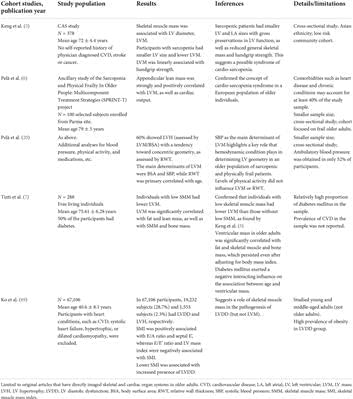Cardiac alterations in structure and function, namely, the left ventricle, have been intensely studied for decades, in association with aging. In recent times, there has been keen interest in describing myocardial changes that accompany skeletal muscle changes in older adults. Initially described as a cardio-sarcopenia syndrome where alterations in myocardial structure were observed particularly among older adults with skeletal muscle sarcopenia, investigations into this syndrome have spurred a fresh level of interest in the cardiac-skeletal muscle axis. The purpose of this perspective is to summarize the background for this “syndrome of concern,” review the body of work generated by various human aging cohorts, and to explore future directions and opportunities for understanding this syndrome.
The traditional view of cardiovascular aging is that of age-related adaptations in the heart characterized by increased left ventricular (LV) mass (LVM) and LV hypertrophy (LVH), which are often secondary to increased systolic blood pressure mainly mediated by arterial stiffening (1, 2). These changes accumulate throughout the lifetime of an individual, increasing the risk of developing cardiovascular disease (CVD), such as heart failure (HF) and coronary artery disease. The incidence of CVD increases with age, rising from ∼78% among adults aged 60–79 years to ∼90% in those aged above 80 years. CVD is the leading cause of disease burden in the world, with global prevalence doubling from 271 million to 523 million between 1990 and 2019. Incident CVD mortality increased from 12.1 million to 18.6 million in the same period , and accounted for 32% of all deaths. With rapidly aging national populations, these numbers are expected to increase.
